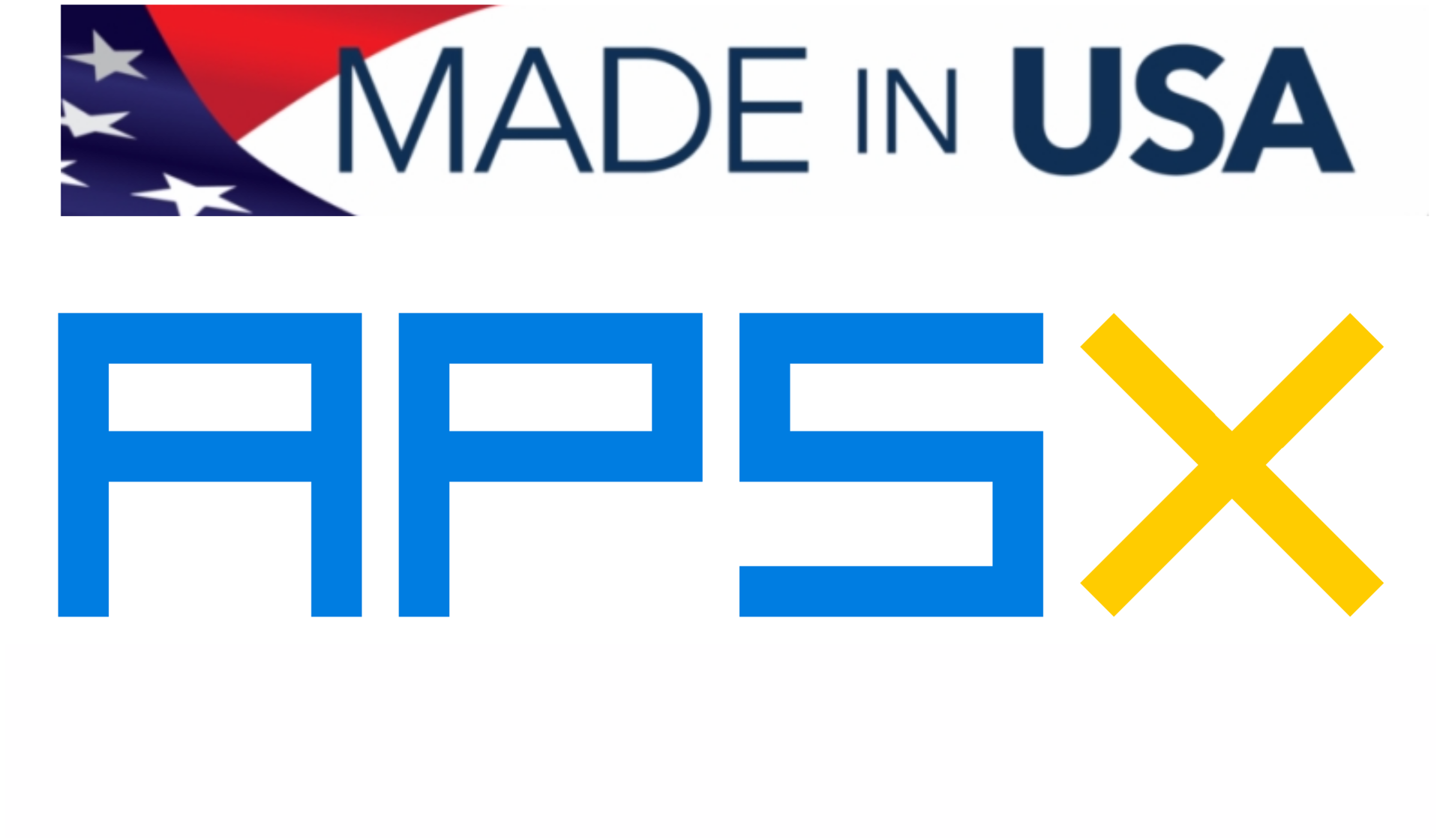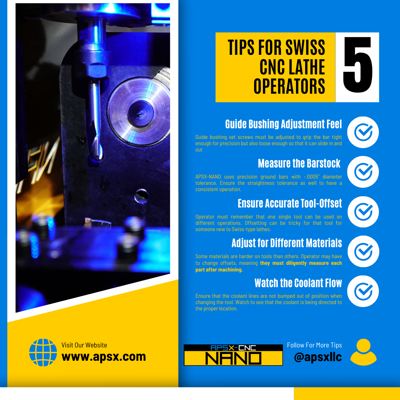Running a Swiss-type isn’t the same as running a traditional lathe. Here are a few tips for Swiss CNC operators.
- Know the difference between a collet and a guide bushing. While the collet must be adjusted tighter to grip the bar when the sliding headstock moves in or out, the guide bushing set screws must be adjusted so it is loose enough to enable the bar to pass through, but not too loose to reduce the bar support needed near the point of the cut. The only real way to learn how to properly adjust the guide bushing is through experience and getting the “feel” of a proper adjustment. APSX-NANO uses precision ground bar stocks that are 0.0005 inch smaller than guide bushings diameter. It feels tightening it too much can cause the slots in the guide bushing.
- Measure each bar before installing. Because the guide bushing must be loosened each time a remnant is removed so as not to gall the bushing during removal, the bushing has to be readjusted each time a new bar is loaded. Most ground bars APSX-NANO uses have a diameter accuracy of -0.0005 inch, meaning the amount of adjustment can vary from bar to bar. The operator needs to readjust the guide bushing for each new bar. What is problematic is if the diameter of a bar varies along its length. For example, say there is a section of the bar where the diameter is a few tenths smaller than nominal. This will diminish the support that the guide bushing would otherwise provide, leading to higher runout and concentricity errors. Measuring a bar before loading it into the bar feeder will reveal any diameter deviations.
- Take care when offsetting tools. Operators of Swiss-types must remember that a single tool might be used to perform a number of different operations. Therefore, adjusting the offset for a tool that’s currently producing an oversized diameter, for instance, might adversely affect subsequent operations the tool performs for that particular job. For example, the adjustment could cause the tool to rough a different diameter too deeply, meaning that for the subsequent finishing pass a tool will be cutting air. Even if a job traveler describes every operation each tool will perform, this concept can still be tough to comprehend for someone who is new to Swiss-types.
- Know the workpiece material. Some materials are harder on tools than others. Operators might have to change offsets when running a high strength material quite often, meaning THEY MUST DILIGENTLY MEASURE EACH PART AFTER MACHINING. This might not be the case when machining less demanding materials such as aluminum.
- Mind the coolant lines. After getting a new job running, a setup person typically will watch to see that the coolant is being directed to the proper location and that chips are being evacuated as they should be. During production, though, it’s possible that an operator could bump a flexible coolant line out of position when changing a tool or insert, for example. Left undetected, this could cause problems such as tool breakage, shortened tool life or poor surface finish.
- Get a feel for finishes. A turned feature looks different than a milled one. Both might have the same finish rating, but the milled surface includes witness marks that turning doesn’t produce. Sometimes it takes an operator a little time to appreciate. Similarly, a drilled hole looks different from one that’s been bored. However, if a hole tolerance is loose enough, it might be possible to simply drill the hole and skip the boring operation. When in doubt, operators might simply just need to check the surface finish specification on the part print.
SOURCE: https://www.productionmachining.com/articles/cnc-machine-shop-shares-swiss-type-lathe-training-tips

